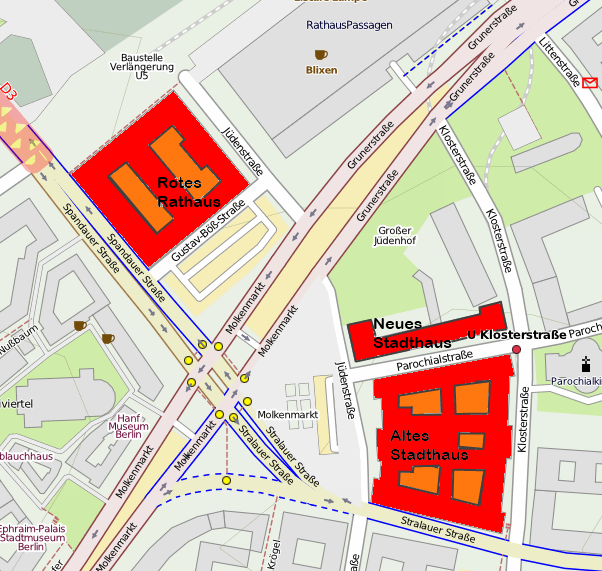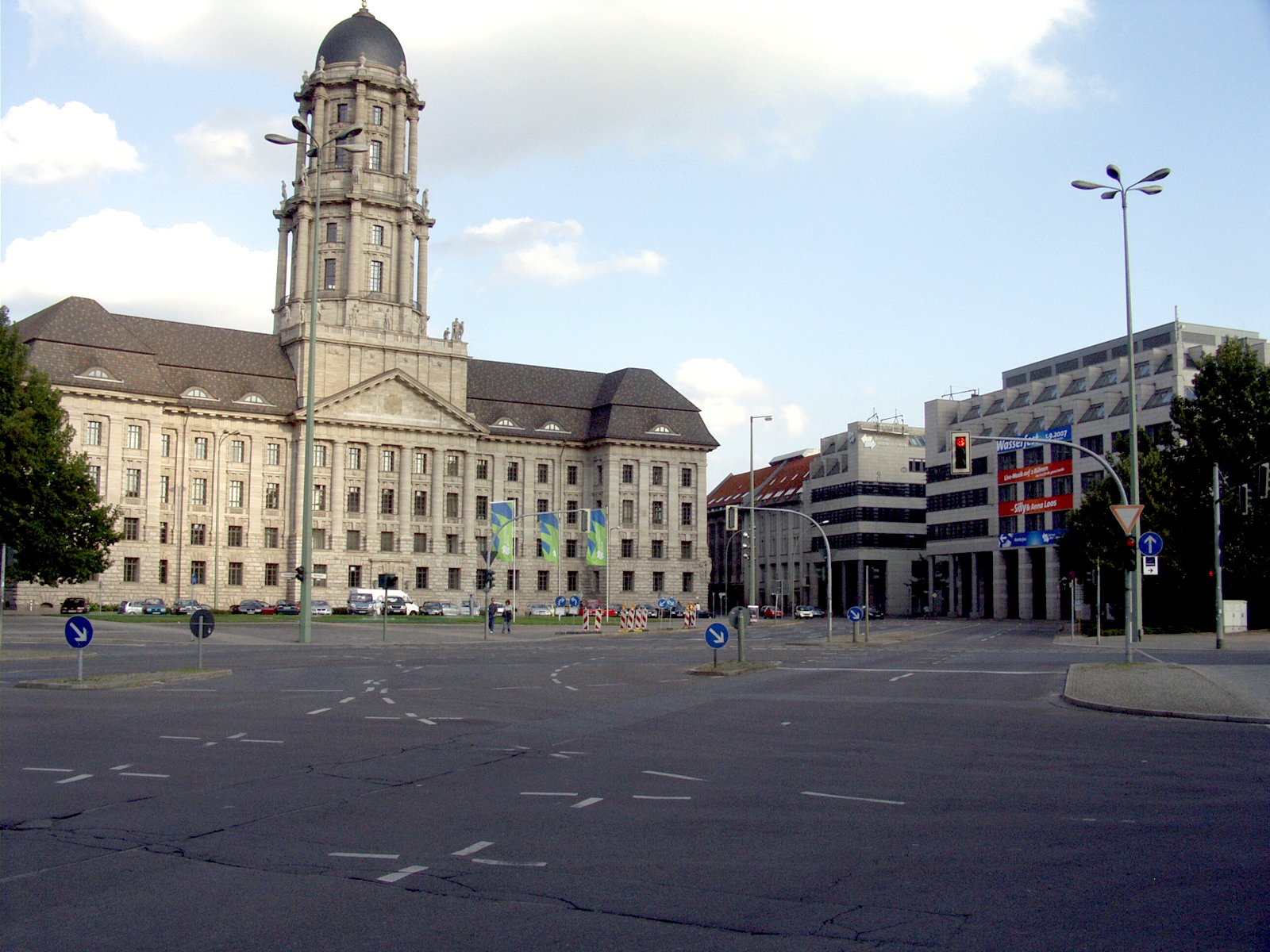|
Jüdenstraße
Jüdenstraße, or Juedenstrasse (see ß; ), is a street in central Berlin, the capital of Germany. It is in the borough of Mitte and runs between Rathausstraße and Stralauer Straße, next to the Rotes Rathaus, Berlin's town hall. It is one of the oldest streets in Berlin, dating from the late 13th century. Its name preserves the old East Central German expression for Jews, which was ''Jüden'', instead of New High German ''Juden''. The Yiddish term for Jews «יידן» (transliterated: Yidn) is based on the same German dialect form, with the German umlaut ''ü'' being represented by a «י» (here pronounced ). As the name of the street suggests, it once ran through the Jewish district of medieval Berlin, which was no ghetto-like obligatory residential area for Jews. An alley of Jüdenstraße named ''Großer Jüdenhof'' was the site of the synagogue, school and miqveh. They were founded on an estate of the Margrave of Brandenburg within his immunity district (''landesherr ... [...More Info...] [...Related Items...] OR: [Wikipedia] [Google] [Baidu] |
Altes Stadthaus, Berlin
Altes Stadthaus ("Old City Hall") is a former administrative building in Berlin, Germany, currently used by the Senate of Berlin, Senate. It faces the Molkenmarkt and is bound by four roads; Jüdenstraße (Berlin-Mitte), Jüdenstraße, Klosterstraße, Parochialstraße, and Stralauer Straße. Designed by Ludwig Hoffmann (architect), Ludwig Hoffmann, chief of construction for the city, it was built in 1902–11 at a cost of 7 million German gold mark, marks () to supplement the Rotes Rathaus. The building has five courtyards and features many sculptures, including 29 allegorical representations of civic virtues and of Greek deities which are mounted on the tower. A Georg Wrba sculpture of a bear, the symbol of Berlin, is located in the central ''Bärensaal'' (Bear Hall). Originally called the "Neues Stadthaus" (New City House), it became the seat of the Council of Ministers of the GDR after World War II. The building next to it became the center of administration for East Ber ... [...More Info...] [...Related Items...] OR: [Wikipedia] [Google] [Baidu] |
Molkenmarkt
Molkenmarkt (literally: "whey market") is the oldest square in Berlin. It is located in the Alt-Berlin quarter of the Mitte district, in the historic centre of the city. With approximately in size, it is today a major traffic junction, dominated by the large Altes Stadthaus administrative building on its southeastern side. History During the initial settlement around the Mühlendamm causeway across the Spree river about 1200 AD, the site developed as the central trading place. In the late 13th century, however, the venue became too small and a new marketplace beneath St. Mary's Church arose, which soon became more popular. The former site was thereafter known as ''Olde Markt'' or ''Alter Markt'' (Old Market) until 1685, when it was renamed to ''Mulkenmarkt'', later to change to ''Molkenmarkt'',Olde Markt Berlingeschichte.de, |

